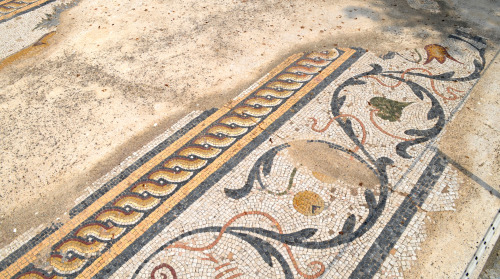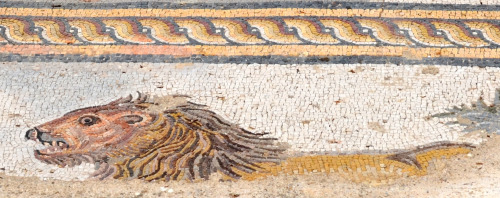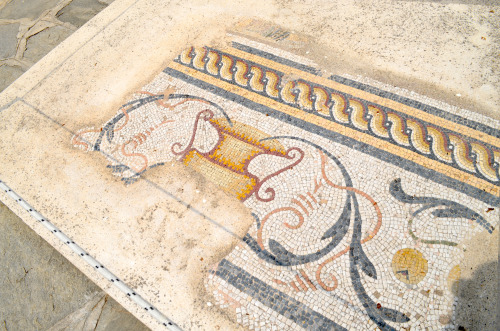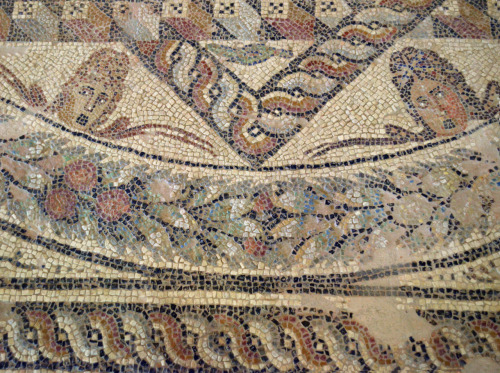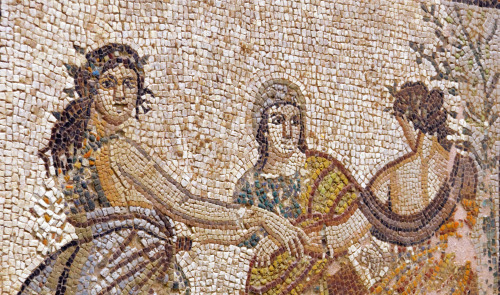#greek museums
Crete, Archaeological Museum of Kissamos:
Λ3239 Kissamos, Health Center. Found and donated by D. Vouterakis 1985. Decorative marble group of Aphrodite and Eros sitting on a rock playing guitar. The composition is iconographically unique. Although Eros is often depicted with a guitar or lyre (on lamps, figurines, mosaics, wall paintings, etc.), the depiction of Aphrodite with musical instruments is rare. It probably decorate an atrium. Date: Second half of 1st century A.D.
Post link
Crete, Archaeological Museum of Kissamos:
Λ3210 Kissamos, El. Venizelos Square 1983. Marble statue of Silinos. The statue worked as a fountain with water flowing from the goatskin on his shoulder. Well polished Parian marble (lychnites). Date 1st 02nd century A.D.
Post link
Crete, Archaeological Museum of Kissamos:
(Λ419) Found in Kissamos, eastern Roman baths, 2005. Marble statue of a young Pan with characteristics of a Satyr. He is holding a hare in his right hand. Roman copy of a Late Hellenistic prototype. Its style is similar to that of the Satyr (694). Date 2nd century A.D
This statue was found crushed in the Roman baths, possibly from the 365 A.D earthquake, this photo is from the excavations - part of the museum exhibition.
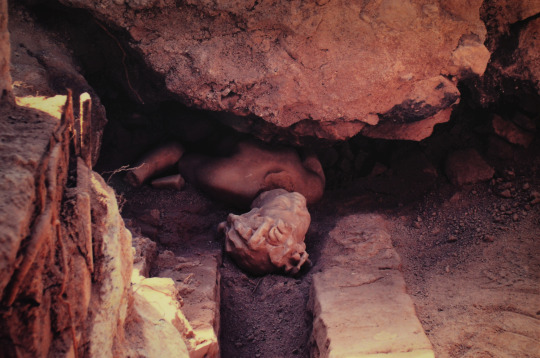
The Earthquake of 365 A.D.
During the night of July 21, 365 A.D. a terrific earthquake of 8.5 Richter magnitude destroyed Kissamos and other Cretan and Mediterranean cities. It triggered a tsunami that reached the Nile delta and is a possible cause of the uplift of Western Crete. This earthquake signalled the decline of the city and the end of the ancient, pagan world in this area.
Finds from the destruction level include coins and ceramics in accord with the chronology of the earthquake, four human skeletons crushed under the ruins, and intense burning on the floors from fires probably caused by fallen oil lamps. The first evidence of survival are outdoor ovens and cooking hearths constructed on top of the destruction debris.
Post link
Cyclades, Archaeological Museum of Paros:
Mosaics with a depiction of the labours of Hercules. The mosaics probably belonged to a public building, possibly a gymnasium dating circa 300 A.D. They were discovered in the premises of the Byzantine church Panagia Ekatontapyliani in Parikia, Paros
Post link
Crete, Archaeological Museum of Chania
Panel with the legend of Dionysos and Ariadne of Naxos, from the Triclinium of the House of Dionysos.
In a large panel Dionysos is depicted on a panther followed by a satyr. In the border part, the artist’s signature is preserved indicating his provenance; Daphne, a suburb of Antioch, where there was a famous mosaic school at the time. The legend of Dionysos and Ariadne of Naxos is depicted in the best preserved smaller panel. The comic masks allude to the relationship of Dionysos with theatre.
Dated 3rd century A.D
Found in the town of Chania (ancient Kydonia), near the Market Square in 1977.
Post link
Crete, Archaelogical Museum of Chania:
Decorative, square from the triclinium of the House of Dionysos.
In the large panel Dionysos is depicted on a panther followed by a satyr. In the border part, the artist’s signature is preserved indicating his provenance; Daphne, a suburb of Antioch, where there was a famous mosaic school at the time. The legend of Dionysos and Ariadne of Naxos is depicted in the best preserved smaller panel. The comic masks allude to the relationship of Dionysos with theatre. Found in the town of Chania (ancient Kydonia), near the Market Square in 1977.
Dated 3rd century A.D.
Detail from another one of the squares.

Post link
Crete, Archaelogical Museum of Chania:
Decorative, border details from the triclinium of the House of Dionysos.
In the large panel Dionysos is depicted on a panther followed by a satyr. In the border part, the artist’s signature is preserved indicating his provenance; Daphne, a suburb of Antioch, where there was a famous mosaic school at the time. The legend of Dionysos and Ariadne of Naxos is depicted in the best preserved smaller panel. The comic masks allude to the relationship of Dionysos with theatre.
Dated 3rd century A.D
Found in the town of Chania (ancient Kydonia), near the Market Square in 1977.
Post link
Crete, Archaeological Museum of Kissamos:
Mosaic of Horae and the Seasons
Vasilios Paterakis plot (1979), north side of El. Venizelos Square.
The main composition of a floor mosaic from a dining room (triclinium). The mosaic was extended with three more panels, each with a separate subject/theme a) hunting scene, b) a colourful scroll of living birds, and c) a series of squares with exotic birds and fruits. The dining room was T-shaped and the figural mosaic covered the floor of the vertical (north-south) part of the T. The horizontal bar of the T had mosaics decorated with geometric patterns.
The square composition exhibited consists of the personifications of the four Seasons in the corners, and the mythological Horae with attributes of the Seasons in a circular dance around a circular altar. The tree symbolizes the idea that the Horae are deities of vegetation. The trinity recalls the older, Hellenic division of the year into three seasons. The circular dance symbolizes the renewal of nature. The mosaic’s combination of the four Seasons with the mythological trinity of the Seasons (Horae) is unique.
The rendering of figures, the details, and the movement indicate a skillful artist and recall a lost Hellenistic painting.
Date 2nd half of the 2nd century A.D
The four seasons at the corners of the mosaic.


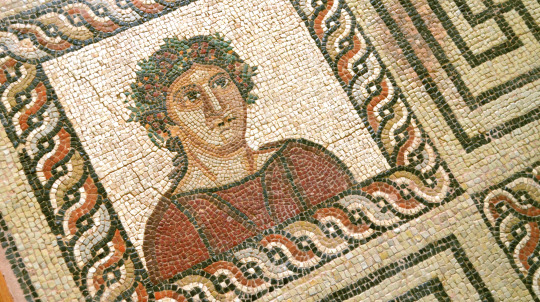
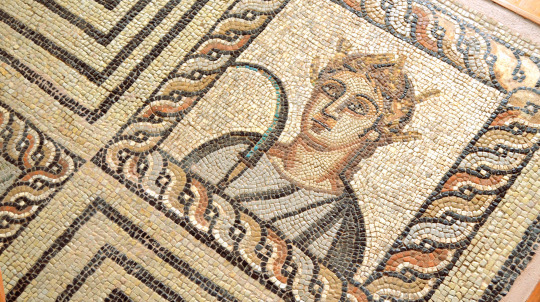
And a full view of the exhibit.
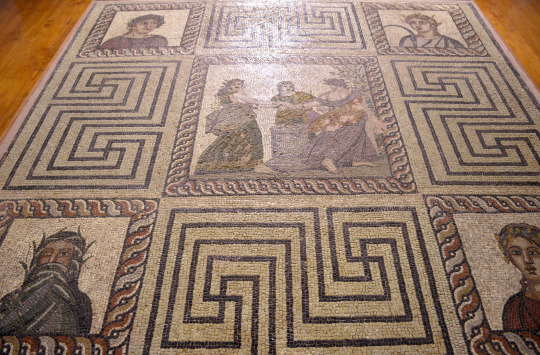
Post link






